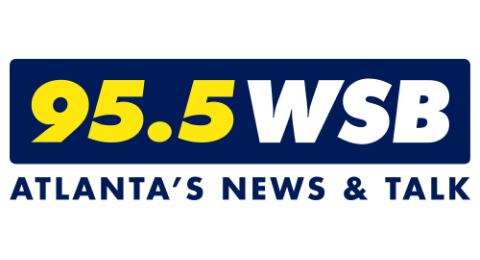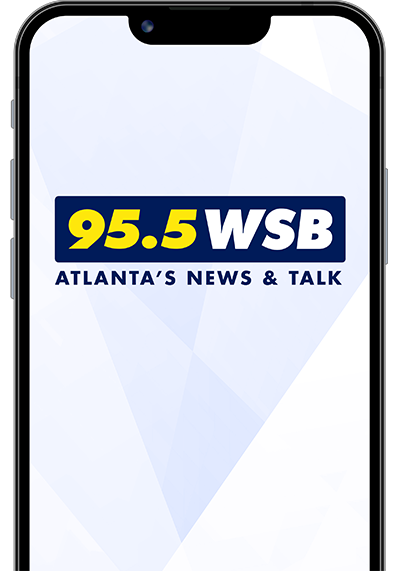State Road and Tollway Authority Executive Director Chris Tomlinson recently sat with Smilin’ Mark McKay and Doug Turnbull on the WSB Traffic Podcast. Tomlinson clued listeners in on how the pandemic has affected the lanes’ use and on how they can best use the new Peach Pass GoI 2.0 App. He also talked about specific times where the lanes are especially helpful and what first-time users need to know. Download the updated app or go to PeachPass.com to learn more. Here are some topics Tomlinson, Turnbull, and McKay covered, along with more information for those new to the area.
Where are the lanes located, who is allowed in them, and how does pricing work?
The pricing in the Express Lanes is based upon demand and around the idea of keeping those lanes moving faster and more predictably than the general purpose or non-tolled lanes. When traffic gets worse, the price generally increases. As more people get used to using the lanes, the price correlates and rises, to try and maintain a steady flow in the Peach Pass lane.
The I-85 Peach Pass lanes run in the far left lane in both directions of the freeway from Hamilton Mill Road (Exit 120) in north Gwinnett County down to Shallowford Road (Exit 93) in DeKalb. The stretch from Highway 317 (Exit 111) to Hamilton Mill opened a few years after the initial lanes.
These all are High Occupancy Toll (H.O.T.) lanes, meaning they cost money for most people. But carpoolers who take three or more people (and set their toll mode as such on their Peach Pass accounts), transit buses, motorcycles, alternative fuel vehicles (with appropriate license plates), and emergency vehicles may use the lanes for free. Vehicles with more than two axles or more than six wheels aren’t allowed in those lanes.
The South Metro Express Lanes are built separately from I-75 between I-675 (Exit 227) and Highway 155 (Exit 216). This is a two-lane system, reversed normally twice per weekday, with fixed entry and exit ramps and gates that keep traffic from entering the wrong-way. These lanes do not allow price exemptions for carpoolers or those with alternative fuel options, but the lanes do keep big rigs out of them.
The I-75 and I-575 lanes, or the Northwest Metro Express Lanes, run from just inside I-285 (Exit 259) to just north of Wade Green Road (Exit 273) on I-75, reversible, and in a double-lane formation. I-575 sees a single, reversible lane between the I-75 interchange and Sixes Road (Exit 11). They operate with the same rules as the south side lanes and, too, are built separately, as added capacity along their freeways.
The Peach Pass is ten years old and faced plenty of resistance when the I-85 H.O.T. lanes first opened along I-85 between Chamblee and Suwanee. With both the South Metro Express Lanes (2017) and Northwest Metro Express Lanes (2018) added in and with the pandemic affecting traffic, how are people using the system now?
The use of the Peach Pass has steadily grown since its October 2011 introduction. Before the March 2020 COVID-19 shutdown, annual trips in the I-85 lanes had increased over four-fold. But as people quarantined and traffic decreased at the start of last spring, SRTA reported trips in the statewide system had decreased over 50% almost instantly. And use of the lanes bottomed out just before Georgia businesses began re-opening in late April.
“Those declines continued and we hit an all-time low of about 82% reduction in trips in the lanes,” Tomlinson said. But trips have steadily increased since then and are at about 60% of the pre-pandemic levels.
Meant to alleviate traffic, the demand for the Express Lanes is less. But the need for predictable trips remains constant. With traffic patterns in far more flux, as Atlanta traffic levels are now back to 85% of pre-coronavirus levels, the need for dedicated lanes remains, Tomlinson said.
There are worse crashes these days, as those used to speeding on the wide open roads last spring now meet moderate or sometimes extreme delays. The completely separate lanes along the Northwest Metro (I-75 and I-575) and South Metro (I-75) corridors make for a great and inexpensive reprieve from extreme backups in the directions those reversible lane systems are pointed.
And there are even more tractor trailers on the roads than this time a year ago. “About 105% more than pre-pandemic,” Tomlinson said. And that holds especially true on the south side.
“The congestion in the south has come back even more quickly in the corridor,” Tomlinson explained, referring to the regular, non-toll lanes. “More people in their passenger cars are starting to take the toll lanes. Some people - it’s just to get away from the truck traffic. But it’s just for the lack of predictability for that congestion.”
Why can’t the reversible lanes change to help bad traffic during crashes?
GDOT HERO units work in concert with SRTA officials stationed in GDOT’s Traffic Management center. They routinely reverse the I-75/I-575 northwest lanes from southbound to northbound at 11 a.m. on weekdays. The same holds true for the I-75 lanes between McDonough and Stockbridge, which get reversed from northbound to southbound. Each reversal follows inbound morning and outbound afternoon rush hour patterns and they get reversed again for the morning drive pattern around 11 p.m. Reversals take one to two hours, as HERO operators check the lanes for debris and left over travelers and then slowly open and close certain entry and exit gates.
Since the process is so thorough, they cannot change the schedule on a dime to respond to a crash. “We take our first cue from our first responders,” Tomlinson explained. EMS, police, and fire may need to use the lanes to get to a crash and certain problems actually could make traveling in the lanes more dangerous. Tomlinson also said that even if they could reverse lanes more quickly to adjust for traffic incidents, people use them so routinely that their finding lanes closed would throw them off.
Tomlinson’s team does adjust Peach Pass lane-reversals when traffic volume is expected to swell. “We do try to look at patterns,” Tomlinson explained, referring to both the weekday rush hour lane-reversals (fairly straightforward) or to how motorists travel on weekends. “We try to look at Spring Break patterns, especially pre-COVID.” And they adjust the lanes based on special events, such as NASCAR races at Atlanta Motor Speedway in Hampton.
I-75 on the south side is the most sensitive to these travel fluctuations and both sides will jam up, so Tomlinson definitely recommends checking their Peach Pass Go! 2.0 App for the live toll cameras to check rates and which direction lanes are open.
The I-85 H.O.T. lanes, since they are stationary and not reversible, are always open, unless a crash blocks them. But when wrecks block multiple right lanes, SRTA will often choose to make those toll lanes available with an “Open to All” message on the rate signs.
How does having a Peach Pass help travelers leaving from or coming to or through Georgia?
“I-75 south is the route to Disneyworld and all things Florida - and some pretty key NASCAR races,” Tomlinson relayed, mentioning he has traveled south in the Express Lanes and seen the general lanes to his right standing still. But that’s at more extreme times.
The entire 24/7 average speed increase in the Peach Pass lanes is still significant. “I-85: the lanes move two and half to 10 miles per hour faster than the other lanes. I-75: six miles per hour to 18 miles per hour faster. And oftentimes, faster than that,” Tomlinson said.
SRTA has made Georgia’s Peach Pass functional with the Florida SunPass toll system and North Carolina’s Quick Pass lanes. And those states’ passes work in Georgia’s lanes. Tomlinson hopes to have Peach Pass and the 19-state E-ZPass system in the midwest and eastern seaboard integrated by the end of 2021.
The Peach Pass, which customers use the Peach Pass 2.0 Go! App or PeachPass.com to load money on, will also soon be able to pay for parking at Hartsfield-Jackson Atlanta International Airport. Each parking use will soon debit money from the Peach Pass account, just as a trip in an Express Lane would.
Tomlinson also said that drivers can add their rental cars’ license plates to their Peach Pass accounts through the app, since removing the barcode scanning sticker from the windshield is not possible. But, he stressed, “Remember to take them off. Otherwise, the next person that rents that car is really going to like you.”
Some users have experienced trouble in the switchover into the new Peach Pass Go! 2.0 App. What can they do?
Tomlinson said that if users have complex issues with their Peach Pass accounts, they need to contact the customer service center at 1-855-PCH-PASS (724-7277) or customerservice@peachpass.com . He also said that some have had functionality issues with the new app, mainly because the account now requires an active email address. If users forgot their information, contact the customer service team, Tomlinson said.
First-time users can sign up for a Peach Pass and learn more about how the variable pricing and lane schedules work, along with adding money to and managing their accounts on the Peach Pass Go! 2.0 App and PeachPass.com.
Cox Media Group










